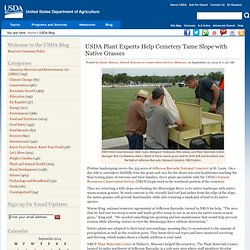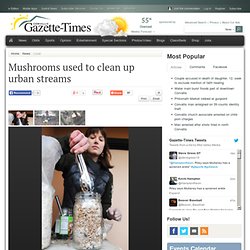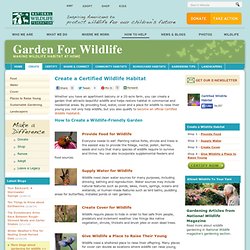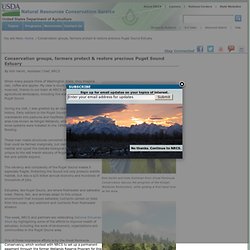

When They Brought These Wolves Into The Park, They Had No Idea This Would Happen. USDA Plant Experts Help Cemetery Tame Slope with Native Grasses. NRCS Soil Conservationist Allen Casey, Biological Technician Nick Adams and Plant Materials Center Manager Ron Cordsiemon select a blend of warm season grass seed for both drill and broadcast into the field at Jefferson Barracks National Cemetery.

NRCS photo. Pristine landscaping covers the 355 acres of Jefferson Barracks National Cemetery in St. Louis. On a day where caretakers dutifully trim the grass and care for the about 200,000 headstones marking the final resting place of veterans and their families, three plant specialists with the USDA’s Natural Resources Conservation Service (NRCS) begin work in the southeast portion of the cemetery. They are returning a hilly slope overlooking the Mississippi River to its native landscape with native warm-season grasses. Wayne King, national cemetery agronomist at Jefferson Barracks, turned to NRCS for help. NRCS’ Plant Materials Center in Elsberry, Missouri helped the cemetery. Bring Back The Monarchs. Monarch Watch is seeking volunteers to collect wild native milkweed seeds for our Bring Back the Monarchs campaign.

Thanks to the donations of over 90 seed sources from across the United States, Monarch Watch was able to distribute more than 50,000 native milkweeds this past spring. But we could have distributed more! Due to the lack of seeds from specific ecoregions we were unable to fill numerous orders from the Pacific Northwest, Desert Southwest, the Gulf coast and southern Atlantic coast. The following is a summary of the seed needs for various regions. If you plan to collect, please see the detailed information for your area found on our website (Milkweed Regions & Seed Needs), as well as collection instructions.
Modified from R. The Northeast: • Ecoregions 212 (east of Lake Huron), M212, 221 & M221 – A. incarnata, A. tuberosa, A. exaltata, A. verticillata, A. viridiflora • A. syriaca is needed for the following states in Ecoregion 221 – MN, MI, WI, KY, TN. Mushrooms used to clean up urban streams. A local group is attempting to clean the waters in Corvallis’ Sequoia Creek — and potentially the Willamette River beyond it — using an unusual tool: mushrooms.

The process used by volunteers with the Ocean Blue Project, an ecological restoration nonprofit, is to place mushroom spawn and a mixture of coffee grounds and straw in burlap bags that mushrooms can grow in, and then place the bags so that water entering storm drains will filter through them. The technique is attempting to take advantage of the natural ability of mycelium — the underground part of fungi — to break down toxins like oil and pesticides and metabolize harmful bacteria like E. coli. Ocean Blue Project volunteers placed their first test bag, containing yellow oyster mushroom spawn, in a drainage chute near the Ninth Street Coffee Culture on Sunday. Richard Arterbury, president of the Ocean Blue Project, said he thinks the project has huge potential.
Create a Certified Wildlife Habitat. Whether you have an apartment balcony or a 20-acre farm, you can create a garden that attracts beautiful wildlife and helps restore habitat in commercial and residential areas.

By providing food, water, cover and a place for wildlife to raise their young you not only help wildlife, but you also qualify to become an official Certified Wildlife Habitat®. How to Create a Wildlife-Friendly Garden Provide Food for Wildlife Everyone needs to eat! Planting native forbs, shrubs and trees is the easiest way to provide the foliage, nectar, pollen, berries, seeds and nuts that many species of wildlife require to survive and thrive. Supply Water for Wildlife Wildlife need clean water sources for many purposes, including drinking, bathing and reproduction. Create Cover for Wildlife Wildlife require places to hide in order to feel safe from people, predators and inclement weather. Give Wildlife a Place to Raise Their Young Wildlife need a sheltered place to raise their offspring. Ready...Set...Certify! Conservation groups, farmers protect & restore precious Puget Sound Estuary. By Kirk Hanlin, Assistant Chief, NRCS When many people think of Washington State, they imagine rain, coffee and apples.

My view is much more complex and nuanced, thanks to our team at NRCS who showed me diverse agricultural landscapes, including the state’s major estuary - Puget Sound. During my visit, I was greeted by an idyllic landscape steeped in history.